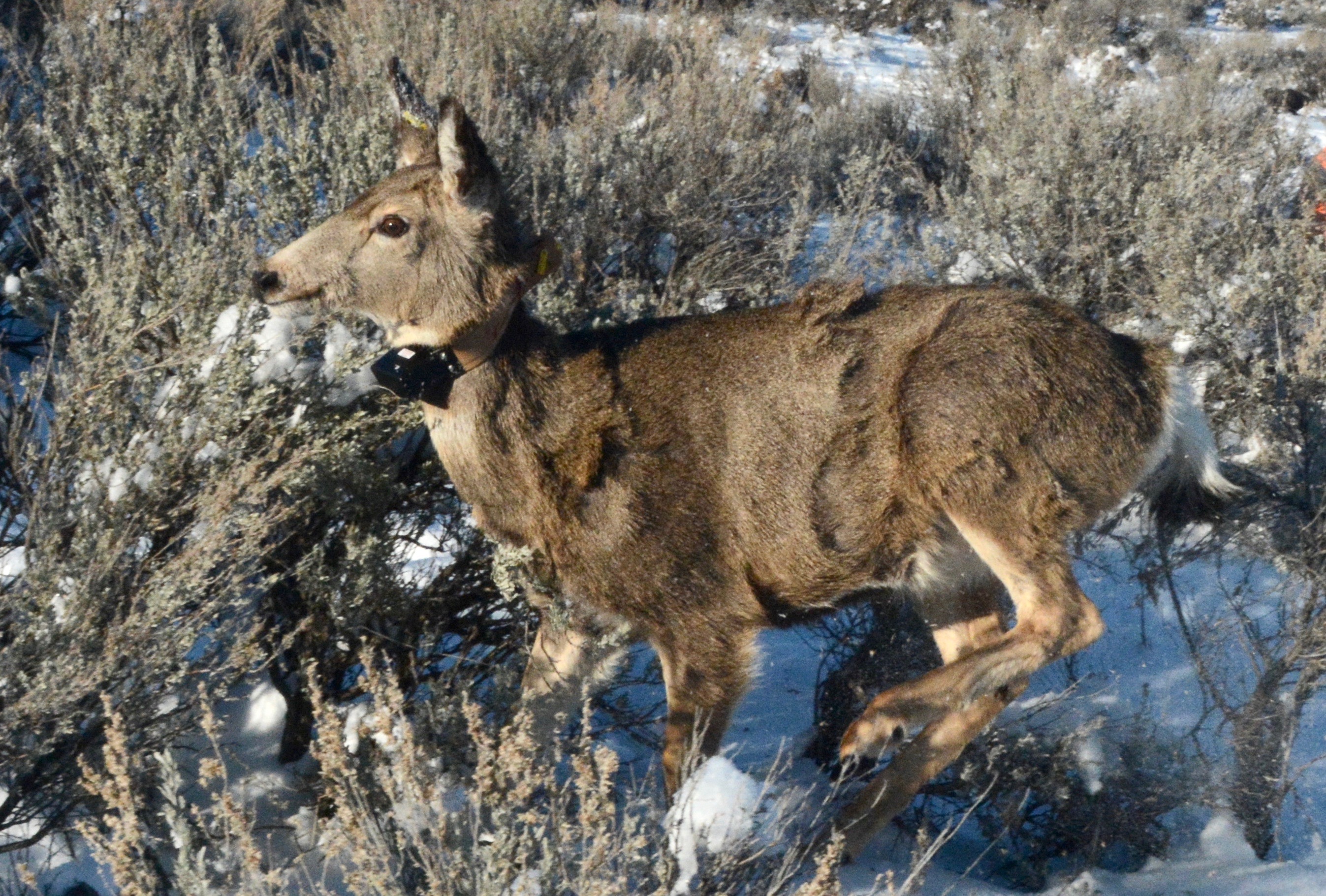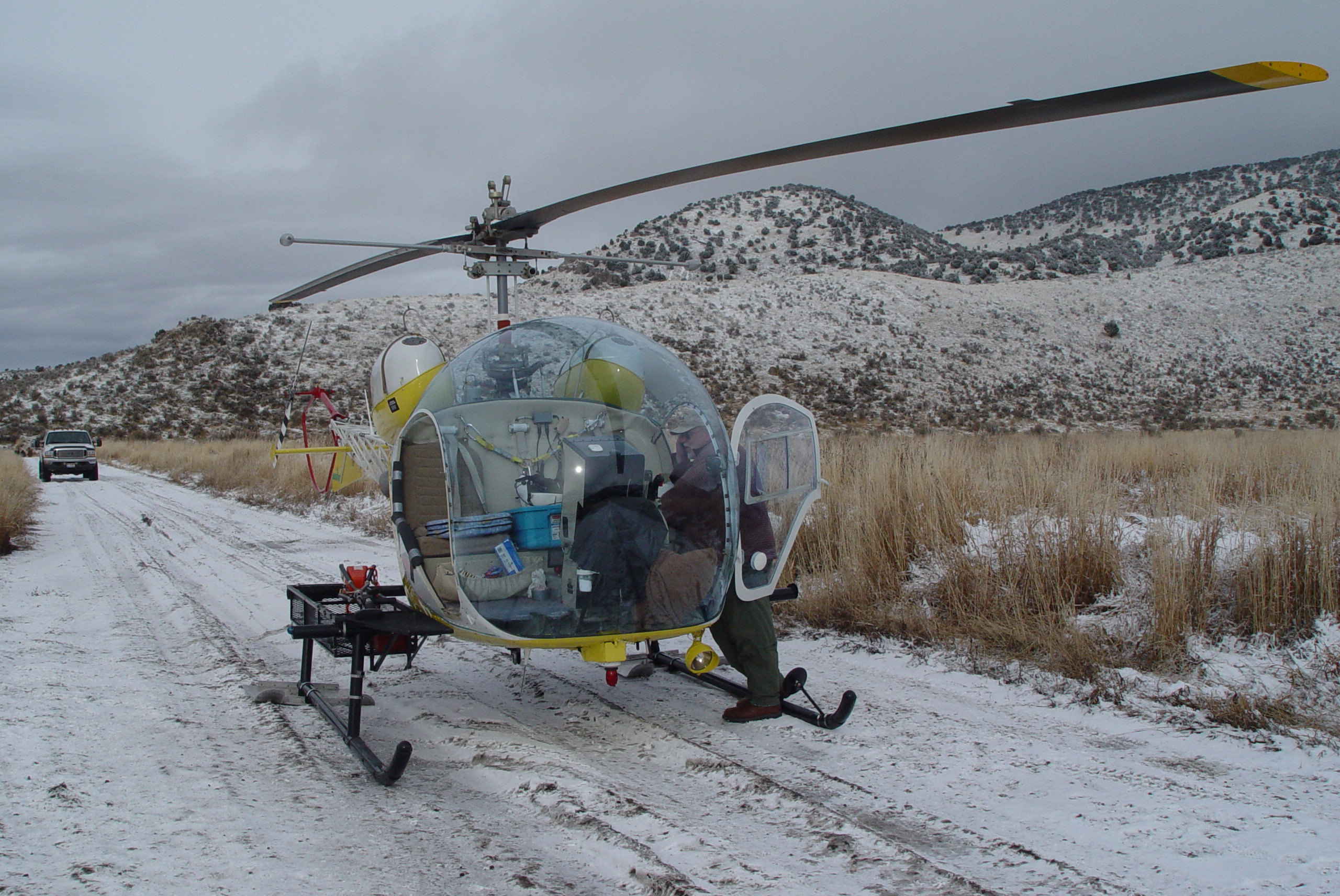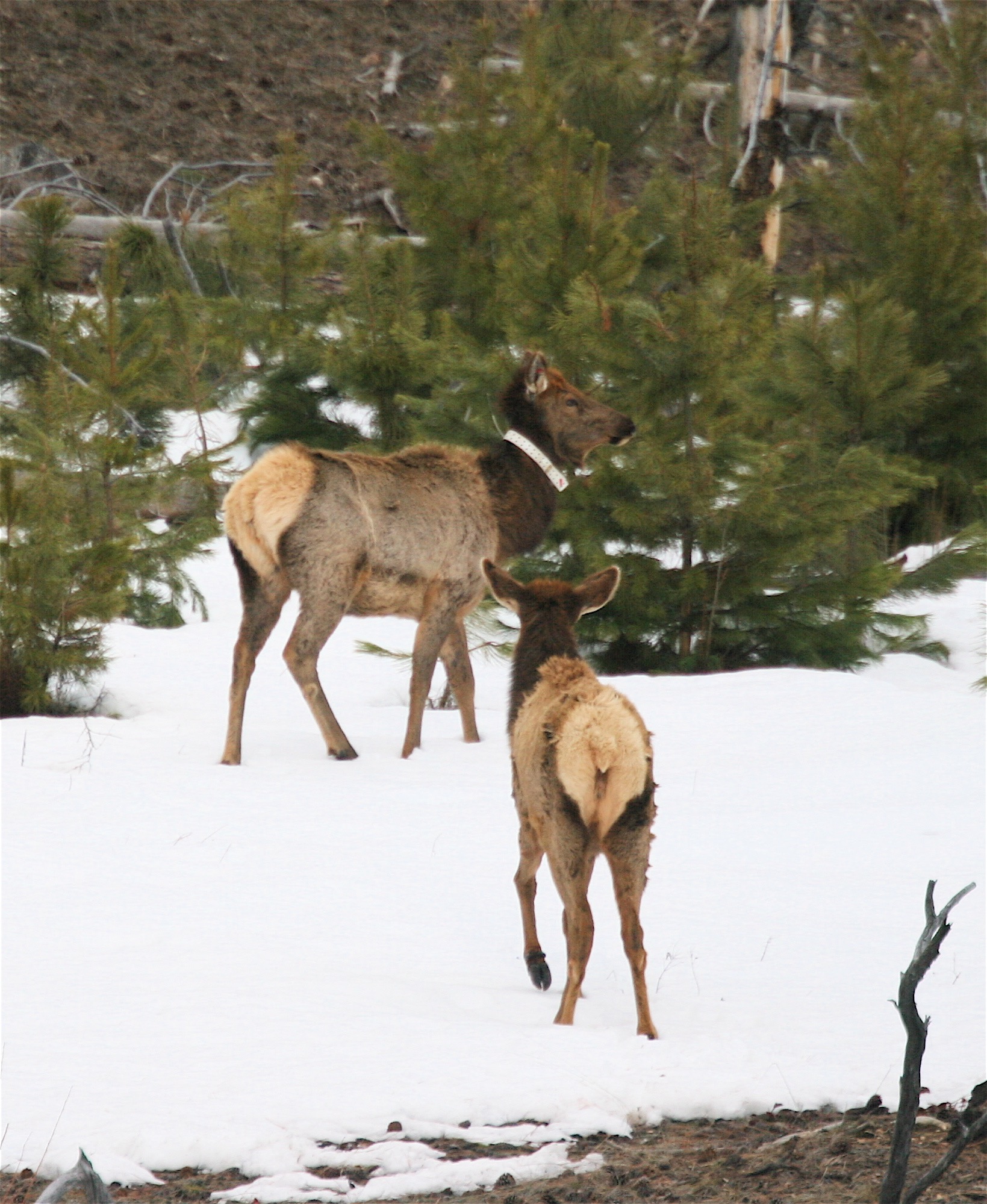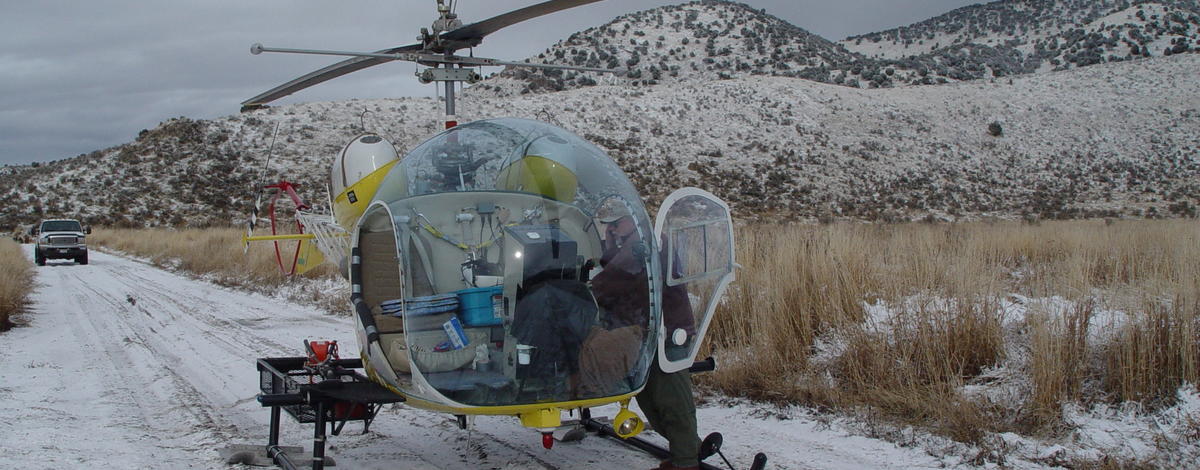Knowing how a winter has impacted a herd of deer or how big game populations are fluctuating is essential in order to make predictions about an upcoming hunting season. Biologists acquire that data, in part, through radio collaring activities and aerial surveys. Here is a breakdown of some of that information used to create the Southeast Region hunting forecast for this fall.
Radio collaring of deer and elk
This past winter (2019-2020), 69 GPS-collared mule deer does and 59 GPS-collared mule deer fawns were monitored in the Southeast Region. Survival of these marked deer were 93% and 61%, respectively.
The Southeast Region also monitored 40 cow and 25 calf elk with GPS collars in the Diamond Creek elk zone (Game Management Units 66A and 76). Cow survival was 90% while calf survival was 44%.
These high survival values for adult female deer and elk should be encouraging for hunters looking to get out this fall. However, the average survival on mule deer fawns and below average on elk calves do not indicate population growth.
Aerial surveys by species and area
Mule Deer: Idaho Fish and Game conducted an aerial survey in 2015 to determine deer population estimates for Game Management Units (GMUs) 70, 71, 73, 73A, 74, 75, 77, and 78. On average, each of those GMUs had about 3000 mule deer during the February time frame, with the exception of GMU 73 which had a population estimate of nearly 8000 deer.
In 2019, Fish and Game conducted an aerial survey of GMUs 71, 72, and 76 and found 3100, 3500, and 9800 deer, respectively.
In 2020, aerial surveys continued in GMUs 74, 75, 77, and 78. Population estimates for those units were 3700, 3000, 2100, and 2800, respectively.
It is important to remember these population estimates represent mule deer counted on winter ranges. These aerial surveys occur at the Data Analysis Unit (DAU) level, and some movement occurs among GMUs within these larger geographic areas. In other words, the GMUs in which deer winter are not the same GMUs used during the summer and fall timeframe (but are within the same DAU).
Elk: The Diamond Creek elk zone is a premier archery hunt and a sought-after controlled any weapon hunt. An aerial survey was conducted in this zone in 2018 and the population estimate was 4251 elk. This was a dramatic increase from the previous survey in 2013 when the population estimate was 2300 elk. The bull:cow:calf ratio was 36:100:36, which indicates a stable to increasing population.
The aerial survey is conducted in January, so is a winter population estimate. We also know from GPS data that some elk that summer in the Diamond Creek zone winter in other locations, such as the Tex Creek Zone, therefore we know the number of elk in the Diamond Creek zone during the hunting season is higher than during the winter survey.
The Bear River elk zone includes GMUs 75, 77, and 78. This is another elk zone for which Fish and Game conducts aerial surveys and it was last flown in 2017. The 2017 winter survey found an estimated 1324 elk using the zone; this represented an almost 40% increase from the previous survey conducted in 2010.
As with the Diamond Creek Zone it appears that some elk summering in Bear River Zone move into Utah to winter, so we expect the number of elk in this zone during the hunting season is likely higher than during the winter survey.
For more information about the big game population monitoring and management process in your neck of the woods, check out the 2020-2025 Idaho Mule Deer Management Plan and the 2014-2024 Idaho Elk Management Plan. You can also contact your nearest regional Idaho Fish and Game office for their most current big game aerial survey and winter survival data.





